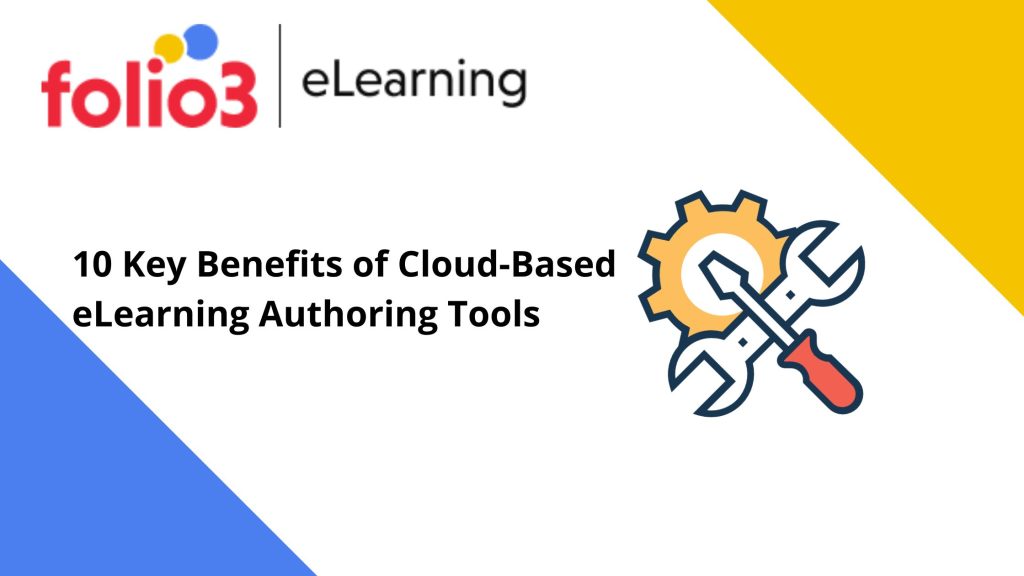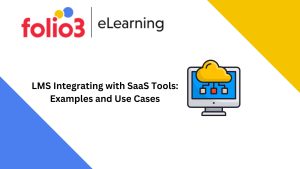
Executive Summary: In the past decade, cloud-based services have become increasingly widespread. The opportunities presented by cloud-based eLearning authoring tools, especially as part of custom eLearning solutions, have greatly benefited most organizations. In this article, we talk about ten key benefits of cloud-based eLearning authoring tools.
What are Cloud-Based eLearning Authoring Tools?
Previously, organizations had to use local devices such as desktops to install authoring tools and enable users to access eLearning. Learning Management Systems (LMS) were used to upload this content so relevant users could access it. It was a tedious and cumbersome process with limitations, such as a lack of flexibility. However, the landscape has shifted drastically with the recent technological advancements and availability of fast-speed internet services. There has been an immense surge in the popularity of cloud-based eLearning tools, especially when it comes to custom eLearning solutions. It has allowed easier access with a significant focus on collaboration and sharing, enabling faster remote-based training for a larger workforce. But let’s first talk about custom eLearning solutions and what they do for us.

What are Custom eLearning Solutions?
When it comes to eLearning authoring tools, the introduction of custom eLearning solutions has proved to be beneficial for the majority of organizations. A custom eLearning solution is designed to keep the organization’s unique requirements in mind and quickly sort out any issues that might arise, thus resulting in a more effective way of training the employees. Some of the top custom eLearning solutions are EdApp, Sweetrush, and EI Design.
7 Great Reasons Why Custom eLearning Development is the Right Choice
Top 10 Benefits of Cloud-Based eLearning Authoring Tools
Let’s explore some key advantages and opportunities of cloud-based eLearning authoring tools.
Benefit Number 1: Ease of Access
As the term suggests, cloud-based eLearning authoring tools are built using a virtual cloud system. Thus, they are not linked to a particular device or desktop. It ensures that there is easier and quicker access for all the users that are involved. All you require is a strong and stable internet connection with the latest browser to access the authoring content.
Benefit Number 2: Data Backup
Another prime benefit of using a cloud system for eLearning authoring tools is better protection when it comes to data. Traditionally, if the computer crashes, all your data or information may be lost forever and require much money to recover. Since the data is stored virtually over the cloud, you are less likely to lose any critical information or document(s).
Benefit Number 3: Reduced Time
A cloud-based eLearning authoring tool ensures that you can deliver the content effectively and promptly to all users. It is especially beneficial If you have a diverse workforce in various locations. You can deliver the required information in the minimum time possible through a cloud-based solution.
Benefit Number 4: Remote Accessibility
Perhaps one significant aspect of any cloud-based service is that you can access it anywhere and at any time of the day. Since organizations nowadays are likely to have on-shore and off-shore employees from different geographical locations, a cloud-based eLearning authoring tool allows them easy access to the learning material at a time and place of their choice.
Benefit Number 5: Real-Time Collaboration
A cloud-based system ensures easy collaboration between the users and/or teams. Instead of making sure everyone is available simultaneously, a virtual system allows each user to do their part and store the data in one central point so that everyone can view and use it well.
Benefit Number 6: Improved Security
The cloud system ensures its security and privacy methods to ensure that there is no security breach or data theft when it comes to critical data. The cloud is subjected to international security standards with data checks, thus reducing security concerns about data being leaked.
Benefit Number 7: No Software Installation
Those who have experienced problems with software installation and crashes would know how frustrating the process can get. Not to forget the frequent software updates and device compatibility issues. A cloud-based system for eLearning thus eliminates the need to install any software. Instead, you would only need to log in from any device of your choice to access the material.
Benefit Number 8: Tailored to Your Requirements
As mentioned previously, you can build a custom eLearning solution. Your authoring tool will ensure that your content is tailored to match your organization’s requirements, enhance its strengths, and mitigate shortcomings, thus resulting in better and more effective outcomes.
Benefit Number 9: Centralized Storage
Storing data in multiple places and remembering them can be exhausting and result in work duplication. A cloud system lets you keep all the content in one central location with all the files and folders. It helps save time and effort while boosting the efficiency of the system.
Benefit Number 10: Engaging Content
A cloud-based eLearning system allows you to include interactive media to make the content and learning more engaging for the users. Since there are fewer space constraints on the cloud than on devices, you can include more video content and high–resolution graphics to make the training process interesting.
Conclusion
Ideally, a cloud-based custom eLearning solution will ensure you can reap the maximum benefits mentioned above. If you plan to use an eLearning authoring tool for your organization, specific questions must be considered before selecting one. Is the tool easy to use? Does it help effectively collaborate with the users? How much flexibility, control, and customization does it offer? These might be some aspects you need to consider to select the most suitable eLearning authoring tools.

FAQS
There are two types of significant authoring tools that are available for use. The first is desktop-based authoring tools installed on a computer, and the second is cloud-based authoring tools that require the internet.
The key differences between both types are:
Desktop-based authoring tools require installation, whereas cloud-based ones are virtual and don’t require installation.
Desktop-based authoring tools may require updates that you have to install, whereas cloud-based authoring tools are updated automatically.
Even though cloud systems have security standards in place, storing authoring tools on your local desktop can be considered safer than the cloud to protect the data from hackers.
Most authoring tools have backup options, but data might be lost if the desktop crashes, whereas data in a cloud system has real-time backup.
With desktop authoring tools, the users work independently on their own devices. With cloud-based tools, however, multiple users can work simultaneously with data being stored in a central place.
There are multiple pricing models available for the different authoring tools. It ranges from monthly or annual subscriptions to pay-as-you-use, pay-per-user, pay-per GB, and free-of-cost tools.









